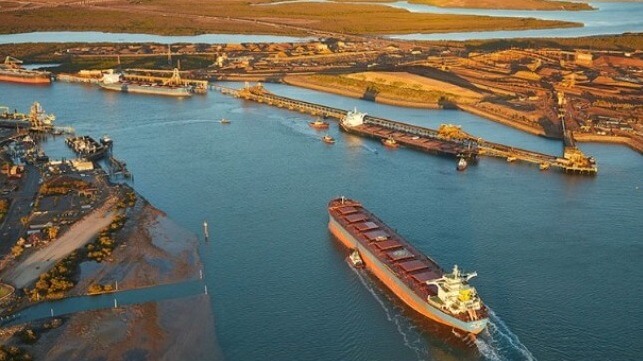Australia Predicts a Decline in Iron Ore Earnings in the Years Ahead

Australia expects to see a decline in iron ore export earnings as rising tensions with China threaten to disrupt the country’s largest export industry. Ore export volume grew slightly to 876 million tonnes in 2021–22, and is recast to rise further to 929 million tonnes by 2023–24 - but earnings are expected to decline as record prices begin to come down.
Data from the Australian Bureau of Statistics show that while the resources sector posted another record year of exports with a 38 percent increase in earnings to $288.3 billion for the 2021-22 financial year, iron ore export value recorded a 12 percent decline, raking in $93.3 billion.
Coal exports were worth $76.4 billion, up 180 percent on the previous year while liquefied natural gas exports were worth $48.7 billion, representing a 130 percent increase on the previous year.
“The results are a tribute to more than a quarter of a million Australian workers in the resources industry, who have helped ensure Australia remains a stable and reliable supplier of resources and energy amidst the global turbulence caused by Russia’s invasion of Ukraine and from the ongoing COVID pandemic,” said Madeleine King, Minister for Resources and Northern Australia.
With Australia’s mining sector contributing around 10 percent of gross domestic product, China remains the key export market generating $112.8 billion of earnings. The Asian giant remains Australia’s biggest market for iron ore, accounting for almost 80 percent of its exports in 2021. China is the world’s biggest consumer of iron ore: its one billion tonne-a-year steel industry absorbs about 56 percent of global production, followed by India in a distant second place with nine percent.
Rising tension between the two countries owing to Beijing’s sovereignty claim over the vast majority of the South China Sea and Australia’s nuclear-powered submarine ambitions is threatening to have impacts on the resources trade.
China’s total imports of iron ore have slowed considerably so far in 2022, with total volumes in the first quarter of the year standing at 354 million tonnes, a 7.3 percent decline year-on-year, and 1.1 percent less than the same period in 2020.
Concerns that rising tensions will impact Australia’s iron ore exports come at a time when the Chinese government is considering establishing a centralized iron ore purchasing platform, a development that is designed to enhance Chinese producers’ negotiating power in the seaborne iron ore market, something that could put downward pressure on prices.
In March this year, the China Iron and Steel Association announced a new ‘cornerstone plan’ to diversify the country’s iron ore supply chain anchored on increasing imports from Africa, with Guinea and Cameroon seen as prospective suppliers. In May this year, Chinese steel producer Sinosteel signed a 50 year contract with the Cameroonian government to develop the Lobe mine with an expected production of around four million tonnes of high grade ore per year.
Beijing has also announced a plan to further consolidate its steel industry, with an aim for the top 10 steel companies to account for 60 percent of the nation’s steel output by 2025.
